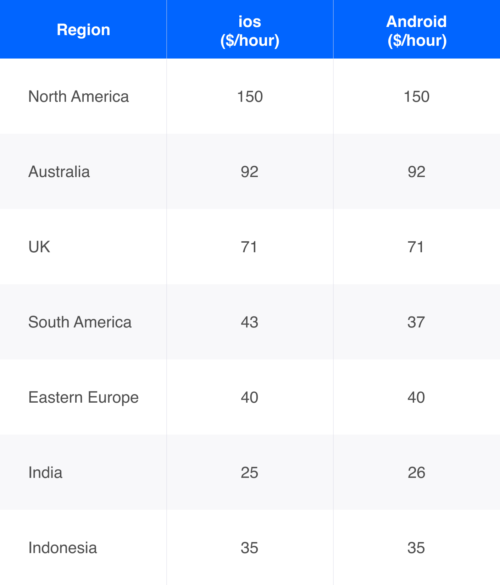Hence, the Agile SDLC model has recently become increasingly popular and in demand. This demand can be primarily linked to the agile model’s flexibility and core principles. By its core principles, we mean adaptability, customer involvement, lean development, teamwork, time, sustainability, and testing, with its two primary elements being teamwork and time (faster delivery). So rather than creating a timeline for the project, agile breaks the project into individual deliverable ‘time-boxed’ pieces called sprints. This model prioritizes flexibility, adaptability, collaboration, communication, and quality while promoting early and continuous delivery.
- Early in the project, DevOps professionals engage in project planning in concert with the system architect and system analyst to help select the optimal CI/C tools and cloud-based solutions that meet the unique needs of the information system.
- This requires a lot of research and planning to ensure that your final product meets your expectations (and those of your customers).
- Through and through, Agile is an advocate of adaptive planning, evolutionary development, continuous improvement, responsiveness, flexibility, and quick delivery.
- After training, systems engineers and developers transition the system to its production environment.
- In traditional software development, security testing was a separate process from the software development lifecycle (SDLC).
Because many teams immediately test the code they write, the testing phase often runs parallel to the development phase. In addition to these reasons, it’s also extremely valuable to have an SDLC in place when developing software as it helps transform an idea project into a fully-fledged, functional, and fully operational system. Another significant benefit of using a system development life cycle is the ability to plan ahead of time and assess the organized phases and goals of a software system project. After knowing the seven steps in the planning phase of the system development life cycle, we’ll also look at two of the most common SDLC models, as well as one sub-model – Waterfall, Agile, and data system development life cycle, to name a few.
Build
Phase 6 of the initial development state of the systems development life cycle puts the software into production and runs as needed. If it performs the tasks correctly and represents the system, the developer moves on to the next phase of maintenance within the system development life cycle. The systems development life cycle (SDLC, also called the software development life cycle or simply the system life cycle) is a system development model.

Each loop within the spiral is called a phase and they can be defined based on the needs of the project managers in terms of risks. Another interesting aspect of the spiral model is its radius which represents the costs of the project while the angular dimension sheds light on the progress being made on the project in each current phase. Progressing down the SDLC, the next phase that typically follows analysis is the design phase. In this phase, all the documentation that the team created in the analysis phase is used to develop the actual technical documentation of the project. The SDLC phases are designed in a way that progressively develops or alters a system across its life cycle. If followed through from beginning to end, the SDLC will help deploy a fully-operational, high-quality system that meets and/or exceeds client requirements, all within the specified time and budget constraints.
What You Need to Know About System Development Life Cycle
According to Robert Half, the drawback of this model is that the heavy emphasis on customer interaction can lead the project in the wrong direction in some cases. For example, define a nomenclature for files or define a variable naming style such as camelCase. This will help your team to produce organized and consistent code that is easier to understand but also to test during the next phase. Also, make sure you have proper guidelines in place about the code style and practices. This article will explain how SDLC works, dive deeper in each of the phases, and provide you with examples to get a better understanding of each phase.

Developers are responsible for creating the actual product that will be delivered to stakeholders. Famous for its iterative approach to software development that offers rapid-fire progress, Agile is a framework that fosters highly collaborative environments between all the teams involved in a project. It is very easy to explain the system development life cycle using the analogy of pouring water into glasses. When water is poured from one glass to another, in the end, if done carefully, you will still have a full glass of water without losing a drop. At each stage, you will transfer the most valuable information throughout the project, focusing on the goals and objectives of the project, and making changes to the project where necessary to improve the user experience.
System Analysis and Requirements
With top-notch developers who are extremely knowledgeable on the SDLC methodology, we can provide you the right environment where software thrives and comes to life. Before embarking on a new project, it’s important to identify how the SDLC will cover and satisfy the overall requirements to deliver the best results. Next, you can select the best SDLC methodology or a combination of methodologies to help you address the best approach to execute the SDLC. The Information System Architect is responsible for selecting the high-level tech stack and component structure of the future solution. The Information System Architect architects the project across its life cycle; In short, this professional designs the software architecture and defines the main interfaces and key elements of the information system as a whole.

DevOps professionals are acutely aware of project requirements and use them as the foundation behind every technology, architecture, and tool selection. This crucial phase is where project members dive deep and define the technical requirements of the system so they can be properly addressed. Again, because SDLCs rely heavily on documentation and guidelines, it’s a team effort, and losing even a key person won’t put the project’s deadline in jeopardy.
How to become a software developer
Languages like C# and Java are still in demand by employers, but many new languages are emerging, too. Before choosing a language, you need to know what you want to code, but simple front-end development languages like JavaScript, HTML, and CSS are good places to start. The Smartsheet platform makes it easy to plan, capture, manage, and report on work from anywhere, helping your team be more effective and get more done. Report on key metrics and get real-time visibility into work as it happens with roll-up reports, dashboards, and automated workflows built to keep your team connected and informed.

The Agile model accounts for shifting project requirements, which may become apparent over the course of SDLC. Most of the information generated at this stage will be contained in the SRS. This document shapes the strict regulations for the project and specifies the exact software model you will eventually implement. This includes the first system prototype drafts, market research, and an evaluation of competitors.
Why should you have a system development life cycle in place?
Try out Stackify’s Retrace tool for free and experience how it can help your organization at producing higher-quality software. Maintenance involves updating an existing software product to fix bugs and ensure reliability. It can also include adding new features or functionality to a current product. Operations refer to the day-to-day running of a software product or service, such as performing backups and other administrative tasks. The spiral model is suitable for large and complex projects that require frequent changes.
The detail design and development is responsible for producing the product, process and material specifications and may result in substantial changes to the development specification. Systems analysis and design (SAD) can be considered a meta-development activity, which serves to set the stage and bound the problem. Architecture, and business architecture, and relies heavily on concepts such as partitioning, interfaces, personae and roles, and deployment/operational restaurant mobile app modeling to arrive at a high-level system description. This high-level description is then broken down into the components and modules which can be analyzed, designed, and constructed separately and integrated to accomplish the business goal. SDLC and SAD are cornerstones of full life cycle product and system planning. In the implementation phase, a software system is delivered to its end users and made available for use.
Stage 3: Design
One of the fundamental aspects of business systems analysis is to consider the value and the efficiency of the systems within a company. This means it is important to evaluate the life cycle of the different systems in the business and analyse whether the systems are worthwhile implementing. Before any of the stages of SDLC are run in a company, it is crucial to first evaluate the benefits of the system. From there, the business systems analyst can look into conducting the first stage of the systems life cycle. This can include resolving new issues that arise as a result of user reports or dealing with leftover bugs that were not able to be corrected before launch.
As a rule, these features help to finalize the SRS document as well as create the first prototype of the software to get the overall idea of how it should look like. Regression Testing – verifies that software that was previously developed and tested still performs correctly after it was changed or interfaced with other software. Requirements Gathering – provides alternative means to illustrate, explain, and specify exactly what must be delivered to meet business goals. Economic Feasibility – determines the positive economic benefits that the system will provide (cost benefit analysis). RAD is suitable for projects where speed to market is crucial, and there is a need for frequent user feedback and continuous refinement. It’s often used in situations where time and budget constraints are stringent.
Software development processes include the Evaluation phase, which ensures that the system is meeting the needs of end users and functioning properly. As part of this phase, any areas for improvement can also be identified, so that the system can be updated and improved as needed. A continuous improvement process cannot be completed without the Evaluation phase, which provides valuable feedback that can be used to improve a system continuously.

